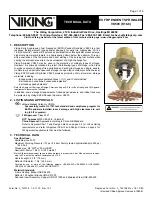
Chapter 3 SPAN Operation
OEM7 SPAN Installation and Operation User Manual v14
79
Figure 23: Vehicle Frame
3.1.4 The User Output Frame
The user output frame is an arbitrary frame, which can be optionally defined to transfer inertial output to a more
useful position or reference frame.
By default, SPAN position and velocity output is given at the center of navigation of the IMU. To output position
and velocity at a different location, specify a user offset translation using the
SETINSTRANSLATION
com-
mand.
By default, SPAN attitude output is the rotation from the Local-Level frame to the Vehicle frame. If attitude output
is desired relative to another frame, specify a user offset rotation using the
SETINSROTATION
command.
3.2 SPAN Translations and Rotations
A SPAN system combines GNSS and INS into a single system. In a GNSS system, the position is reported rel-
ative to the phase center of the GNSS antenna. In an INS system, the position, velocity and attitude data is
reported relative to the center of navigation of the IMU. For a SPAN system to provide a combined GNSS+INS
position, velocity and attitude, it must know where the GNSS antenna is positioned relative to the IMU.
The orientation of the IMU relative to the forward direction of the vehicle is also needed to convert the velocity
and attitude changes sensed by the IMU into the actual motion of the vehicle.
If the SPAN system incorporates other devices, such as a camera connected to an Event Input, the SPAN sys-
tem also needs to know the location and orientation of these additional devices relative to the IMU.
3.2.1 Translational Offsets
The three dimensional distances between the IMU and other SPAN components are called translational offsets.
The translational offsets are measured in three directions, X axis, Y axis and Z axis, typically relative to the IMU
Body frame. Translational offsets can also be entered relative to the Vehicle frame.
















































